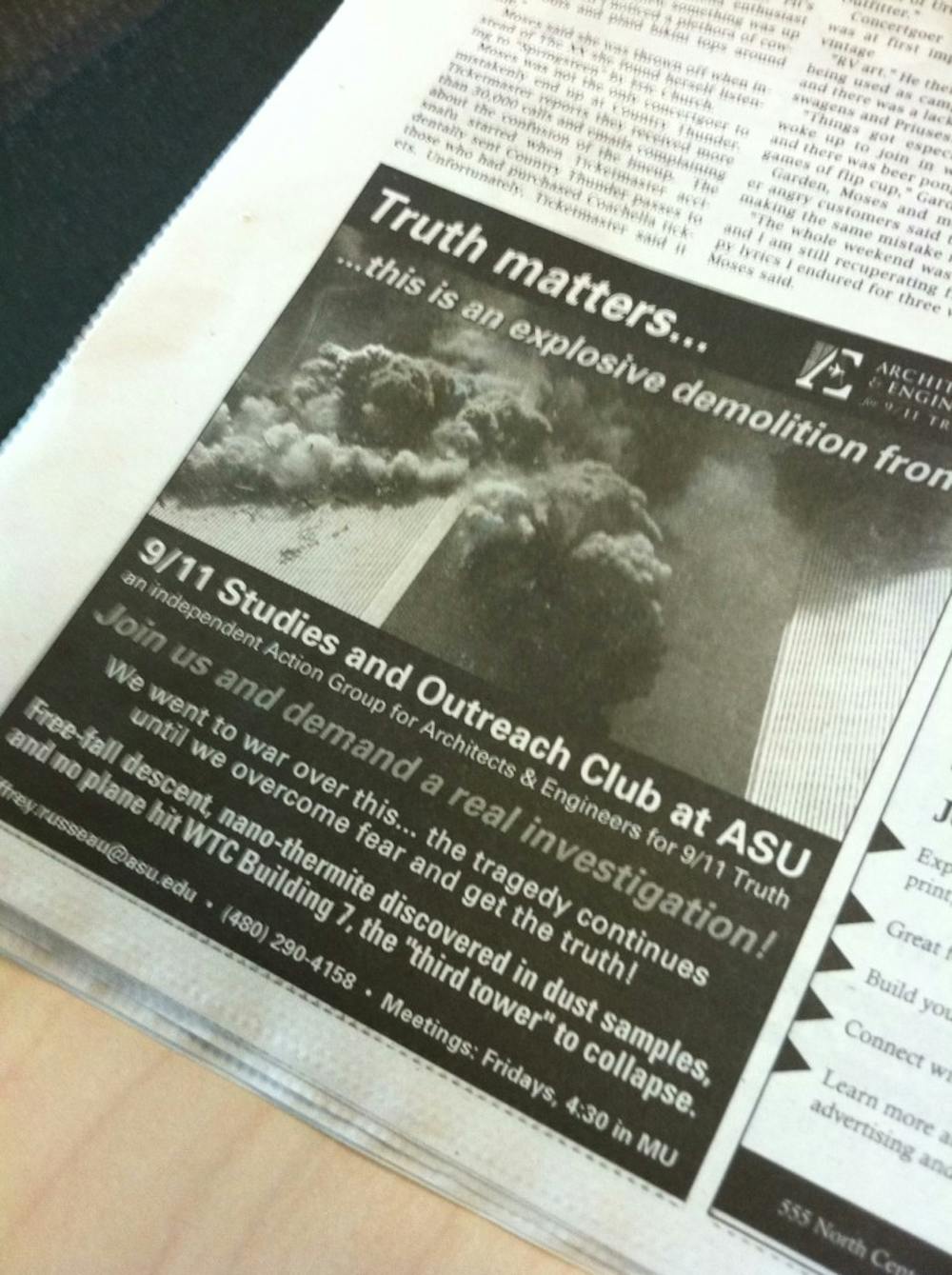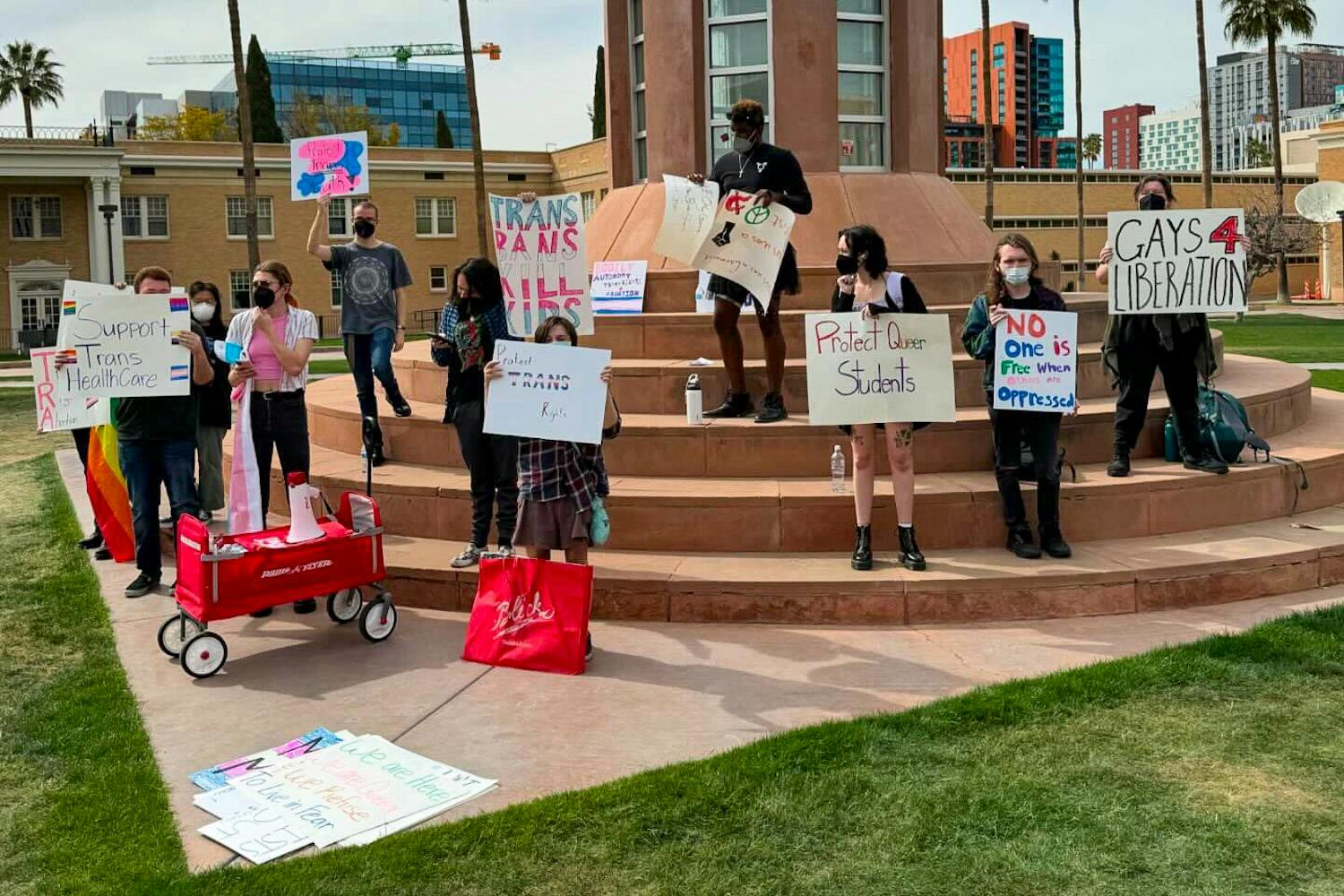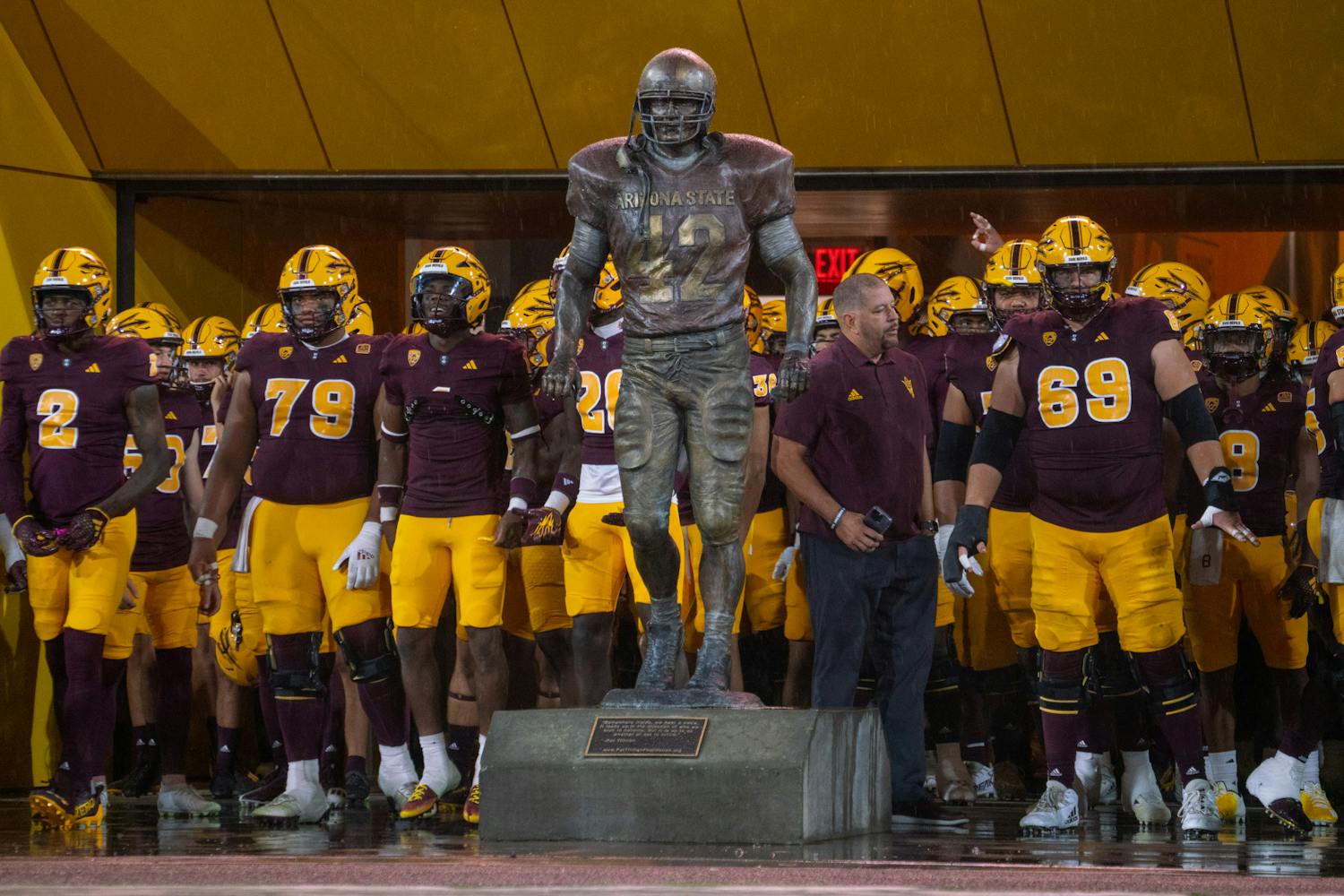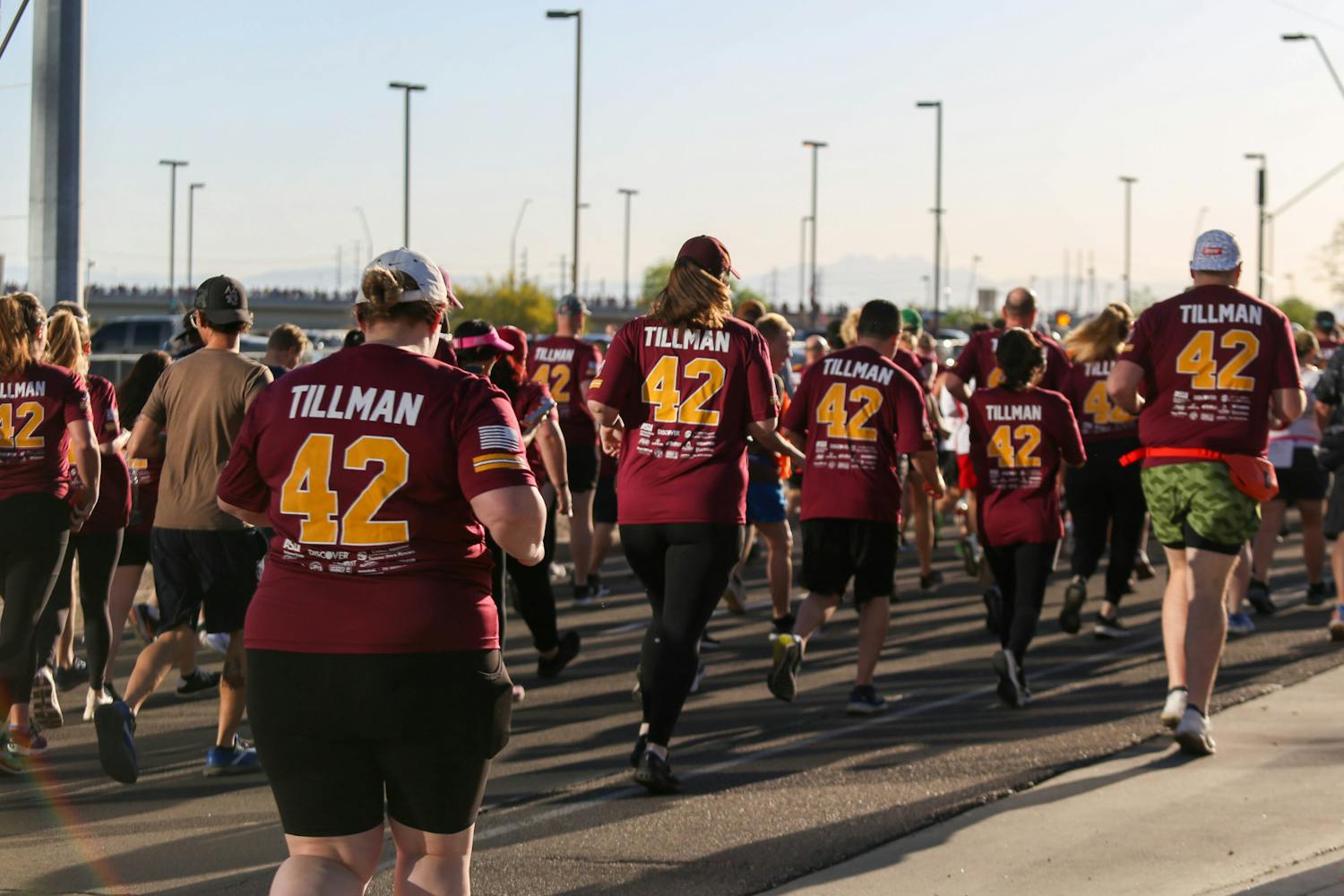 9/11 Truth Movement: a group of students who question the established narrative of the 9/11 events.
9/11 Truth Movement: a group of students who question the established narrative of the 9/11 events.Photo by Taylor Costello
In one stroke of irony and simply bad timing, the advertisement for their club appeared within the pages of the most recent ‘The Stale Mess,’ the comedic offshoot of The State Press that pops up at end of every semester at ASU.
To an untrained eye, it might have seemed like a bad joke, in poor taste, yet this wasn’t the case at all.
Their advertisement depicted a low angle photograph of the South Tower of the World Trade Center on 9/11, as it began the final descent toward the ground.
Wedged between the image, the accompanying text read, “Truth matters…this is an explosive demolition front … Join us and demand a real investigation.”
 An ad calling to question the events of 9/11 appeared at a low angle in The State Press's Stale Mess, a comedic offshoot published each semester. However, the ad wasn't a joke. Photo by Taylor Costello
An ad calling to question the events of 9/11 appeared at a low angle in The State Press's Stale Mess, a comedic offshoot published each semester. However, the ad wasn't a joke. Photo by Taylor CostelloThe demographic behind the ad, officially called the 9/11 Truth Movement, represents one of the most unexpected aspects of culture to emerge in wake of the tragedy, a small but very vocal sample of the population who question the validity of the established narrative of the day’s events by figures in government.
In the immediate aftermath of the attacks, people from a diversity of backgrounds began to cry foul, a volume unseen since the Kennedy Assassination almost 40 years prior.
“The club is a more of a social project of how of to spread this message,” says Steve Cohn, the college outreach advisor for the group.
“The 9/11 Studies and Outreach Club at ASU,” a new group on campus responsible for this advertisement, represents a one of the more consistent theories regarding the attacks.
By the end of the day, three of the towers in the World Trade Center complex collapsed. They believe these collapses were result of a controlled demolition, similar to one carried out on a condemned building.
It’s an angle the club approaches from when they erect a booth, called a “Truth Booth.”
When faced with a skeptic who approaches them, members open with something to the effect of, “Have you heard about building seven?”
The booth is the dominant form of raising awareness of the club, based on independent polling for many of these theorist sites that indicate a lack of awareness of World Trade Center 7 collapsing later that same day.
“We encourage non-believers to come out, we like those guys,” the club’s president, electrical engineering senior Jeffrey Russeau says.
This collapse became a rallying point for subscribers of an alternative narrative, based on preexisting knowledge that the building wasn’t struck by an airliner, only debris from the nearby collapsing structure of the North Tower.
The outreach club, and their national umbrella organization, the “Architects & Engineers for 9/11 Truth,” attempts to refute the conclusions of investigators, such as the National Institute of Standards and Technology’s (NIST) and other subsequent experts.
More specifically, they wish to refute their concluded irreparable failure of supports from lack of personnel and ignition of the sprinkler systems to combat the widespread fires throughout lead to the collapse.
Russeau, and the 2,000 other architects and engineers representing the umbrella group, all argue that the reasoning of the free fall of World Trade Center 7, the subsequent quick cleanup at the Ground Zero site, as well as questions over NIST’s transparency over the methods in the construction of the computer models analyzing the collapse, are refutable.
“A lot of this gets thrown around on the Internet in all the wrong ways, and it’s very disheartening to see that the cold hard facts get overlooked and misconstrued and really turned around to work against it,” Russeau said.
A Decade Later
Accusations of conspiracy reached such a level of proliferation of voices in the years following the attacks that it forced “Popular Mechanics,” the science magazine, to devote an entire issue in early 2005 to debunk the myths.
The article, then released with the title of “Debunking 9/11 Lies: Conspiracy Theories Can’t Stand Up to the Hard Facts,” listed all the common myths regarding the attacks.
One of those debunked myths included the oft-repeated one that building seven was brought down by explosive charges.
According to recent polling, the number of people believing in conspiracy waned since the decade after the attack, with 68 percent rejecting a notion of conspiracy.
Yet, as the 15 percent who still believe in a conspiracy in this 2011 poll demonstrate, they’re still out there, even if disconnected.
A Wednesday evening outside Changemaker Central at the MU marked a recent meeting of the group. However, this meeting only yielded two members, Russeau, and Cohn.
This, Russeau reasons, was due to numerous conflicting schedules in scheduling a group meeting.
At an average meeting, the club president says that they are on usually “nine strong,” on other days five to six people. By contrast, he says that their email list contains about 400 names.
“Some people have heard that there’s a 9/11 Truth movement, but they haven’t looked into it,” Cohn says.
“I would 85 percent of the people that stop by, definitely learn something new at this…” Russeau starts to explain when he is disrupted.
His train of thought is disrupted then by a chance encounter with another Truther, marketing senior Cody Somerville, who noticed the design on Cohn's shirt.
“I just saw your shirt and I was like, ‘Hell yeah!” Somerville says, referring to building seven on Cohn’s shirt.
Conspiracy Culture
The theories of the 9/11 “Truthers” exist within a wide spectrum, with some basis to the real world to fantasy. None of them worldwide exist under a single, unitary theory.
A sampling of these to beliefs range from some in power with advanced knowledge allowing the attacks to occur to missiles or military planes striking the World Trade Center and the Pentagon, all the way up to holograms masking the true forms of the objects before they crashed into their respective targets.
When probed about the extent of the real narrative that occurred, he is cognizant enough to narrow the conversation’s focus of narrative to that of the belief that a “controlled demolition” brought down the three buildings in New York — even if the other popular theories, such as a missile, not a commercial airline, striking the Pentagon, sit fine with him.
“…but that’s all besides saying, we’re not about the Pentagon, we’re all about building seven,” Russeau says.
The two men say while they are allowed to formulate specific individual theories, elsewhere these theories are limited by their own specifications of knowledge.
“Our expertise, because we’re architects and engineers, and we’re a part of the Architects and Engineers [for 9/11 Truth] petition, we understand more building construction,” Cohn says.
Now in their second semester as an organization, gradually gaining new members is the present goal, along with collecting signatures that they hope in time will ignite a new investigation.
Where there is disagreement between two members is with the connotations of the term “conspiracy theorist.” Cohn freely uses it to describe the different schools of belief used to categorize what they believe occurred, whereas Russeau rigorously avoids diluting the premise of their organization by using that term to classify himself and others.
“It’s immediately discrediting,” Russeau says.
Reach the writer at tccoste1@asu.edu or via Twitter @TaylorFromPhx




